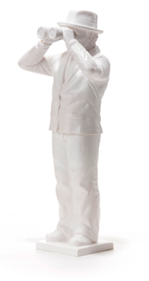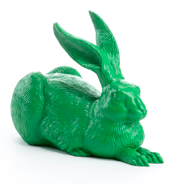
Ihr Warenkorb ist leer.


Ihr Warenkorb ist leer.

Three thousand lions – the heraldic animal of the German state of Hesse – made of plastic are transforming Kranzplatz square in front of the State Chancellery into a "lion park". For artist Professor Ottmar Hörl, who was born in Nauheim near Groß-Gerau, the project is almost like playing in front of a home crowd. The "Open Day" at the State Chancellery on Saturday, 1 September, only provides the occasion. For a long time, Professor Hörl had been thinking about giving expression to his Hessian identity by means of art, as he confessed when the art project was launched: "I really feel I need to do that. I enjoy being a Hessian."
With the art campaign he also wishes to mend the suspected lack of regional identity demonstrated by his fellow Hessians. The means to this end is the Hessian heraldic animal, the lion. Reproduced several thousand times in red, white, blue, and gold, and screwed onto square wooden slats, "it symbolises the state of Hesse and at the same time encourages citizens to participate." Moreover, the large-scale installation is also intended to inspire people to engage in a discourse about art during the ten days it will be on show: "Artists have to get in touch with society," said Professor Ottmar Hörl. To do so, you have to take art from the museums into public space. Hörl himself developed the model for the plastic lions, which are almost forty centimetres tall, from the two-dimensional template of the Hessian heraldic animal. As was the case with similar projects in the past, the 3,000 Hessian lions will be sold at the end of the art campaign and the proceeds will benefit two institutions for the disabled. The artist and the State Chancellery see this as an important component in realising their goals: on the one hand, the low price allows everyone to participate in art. On the other hand, the lions will spread throughout Hesse, thus strengthening identity formation.